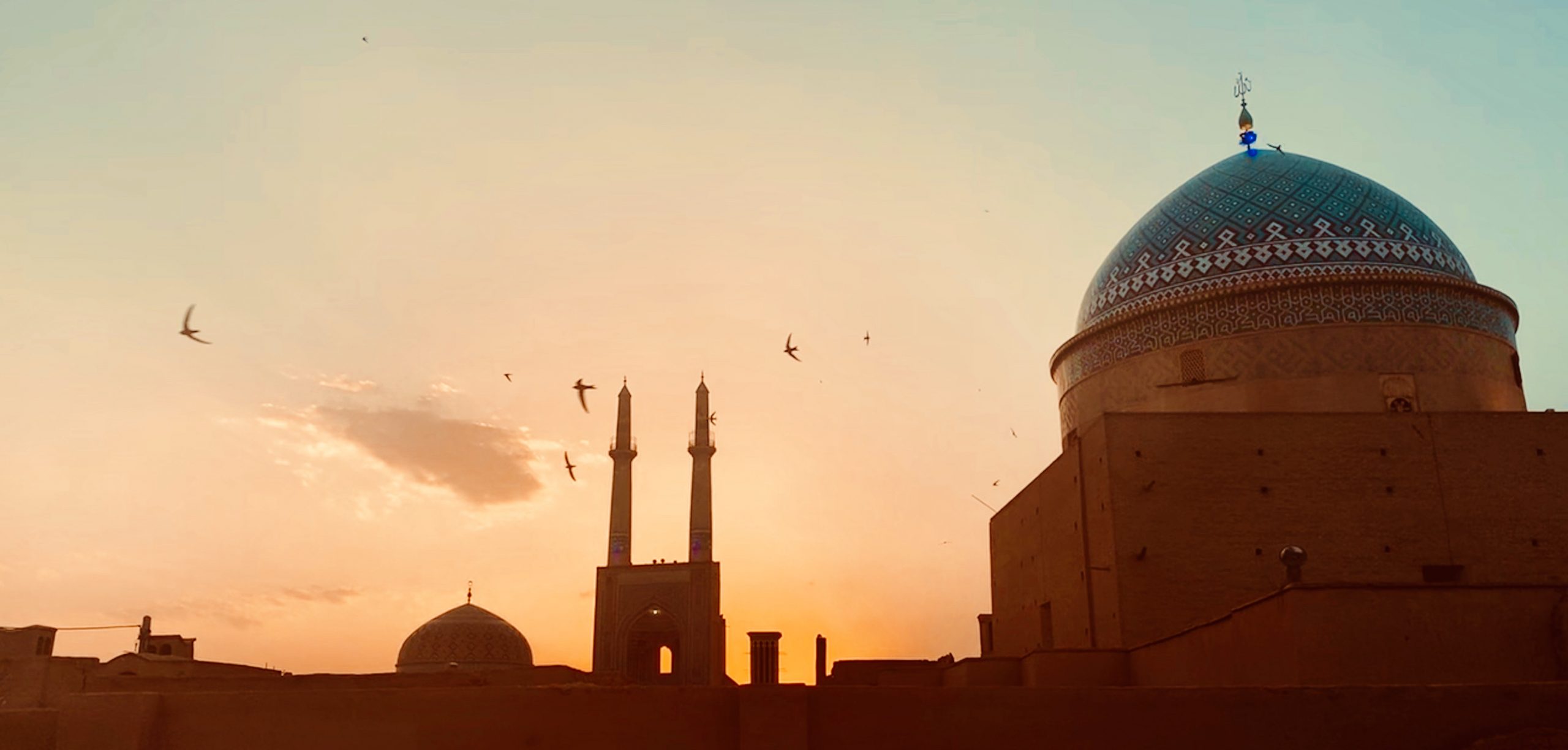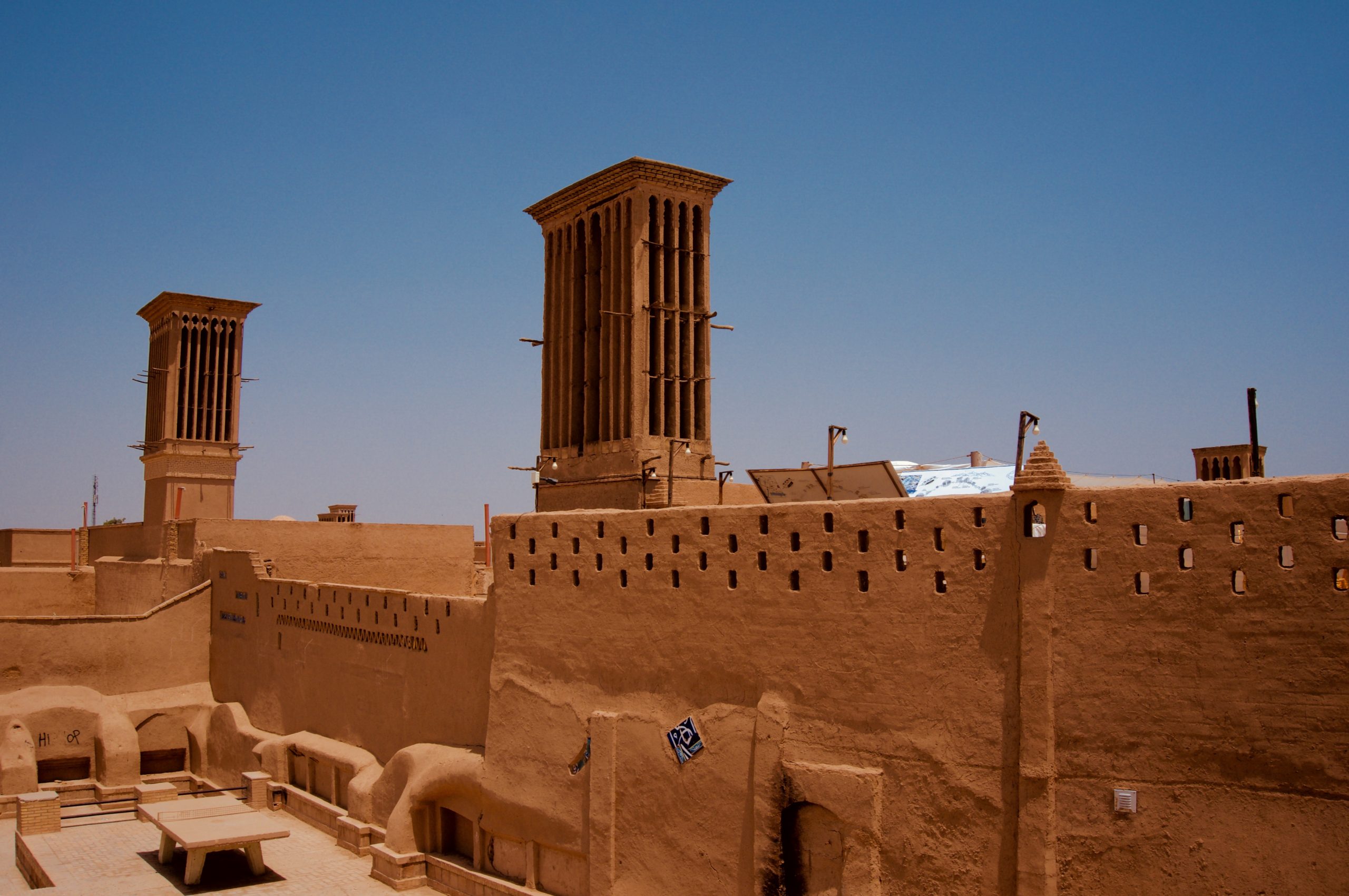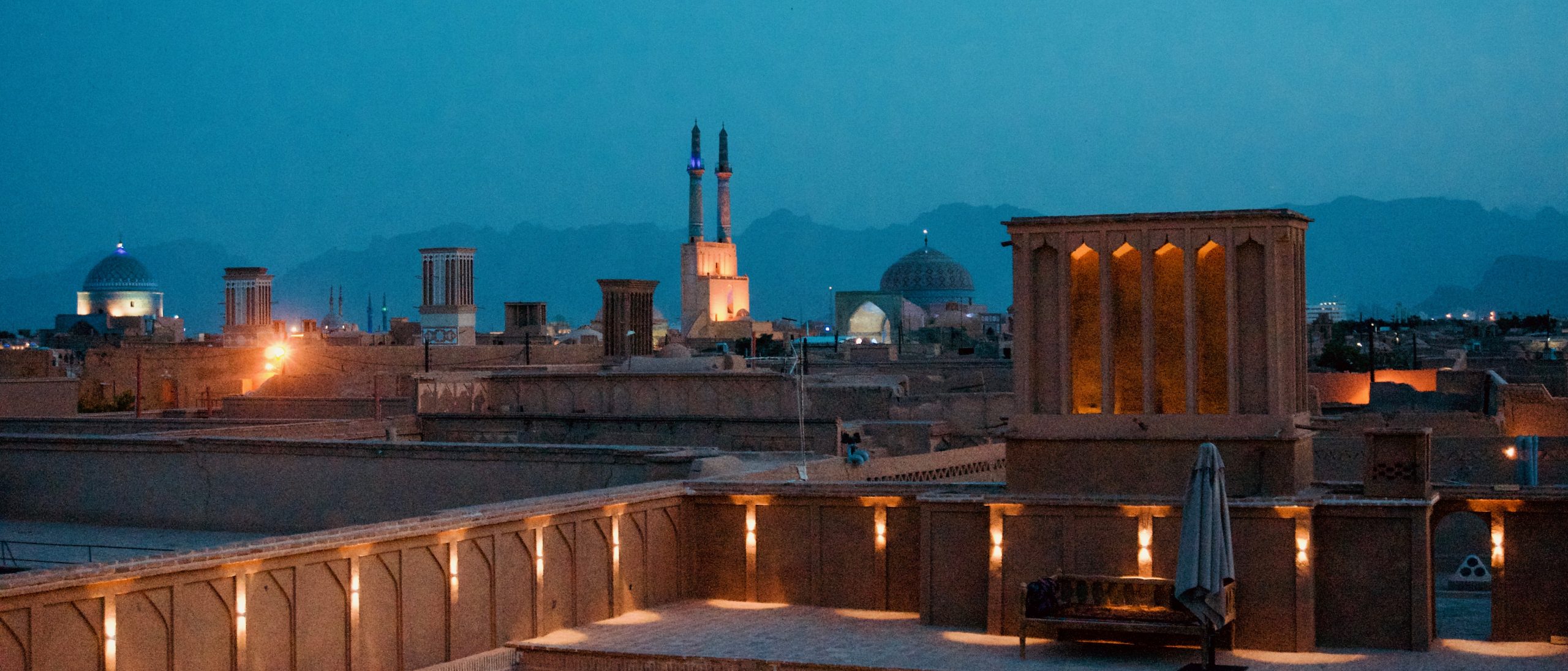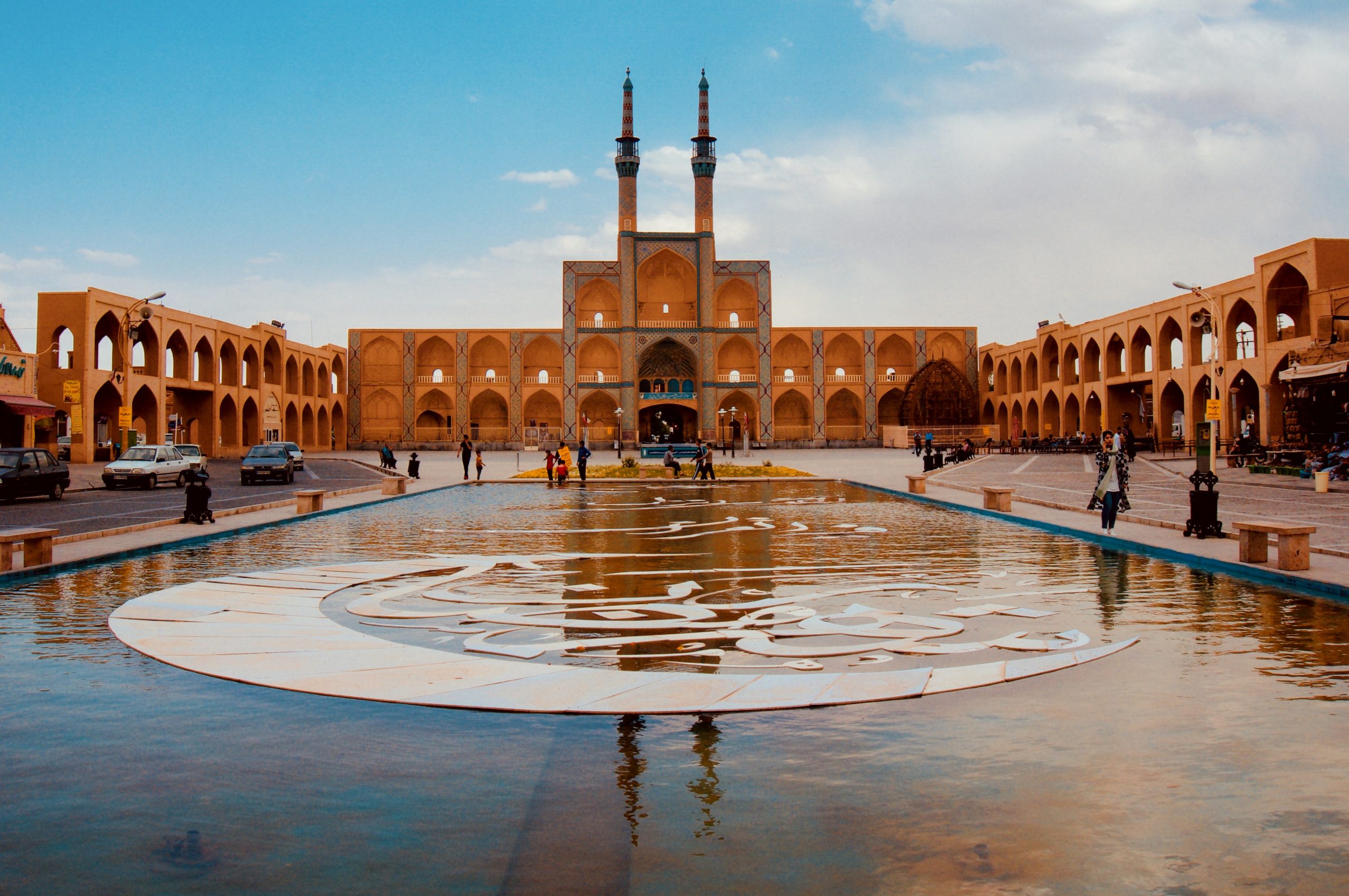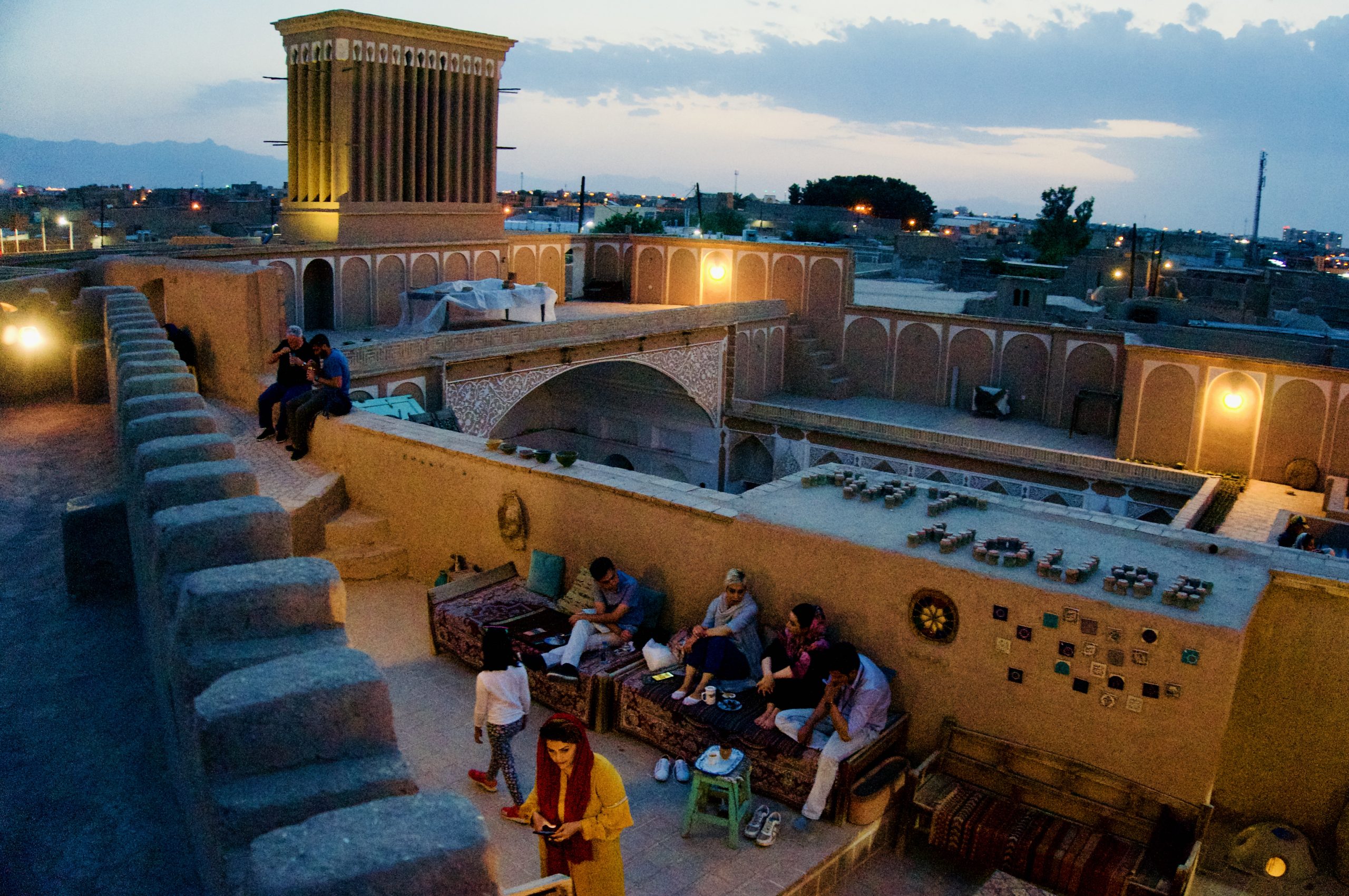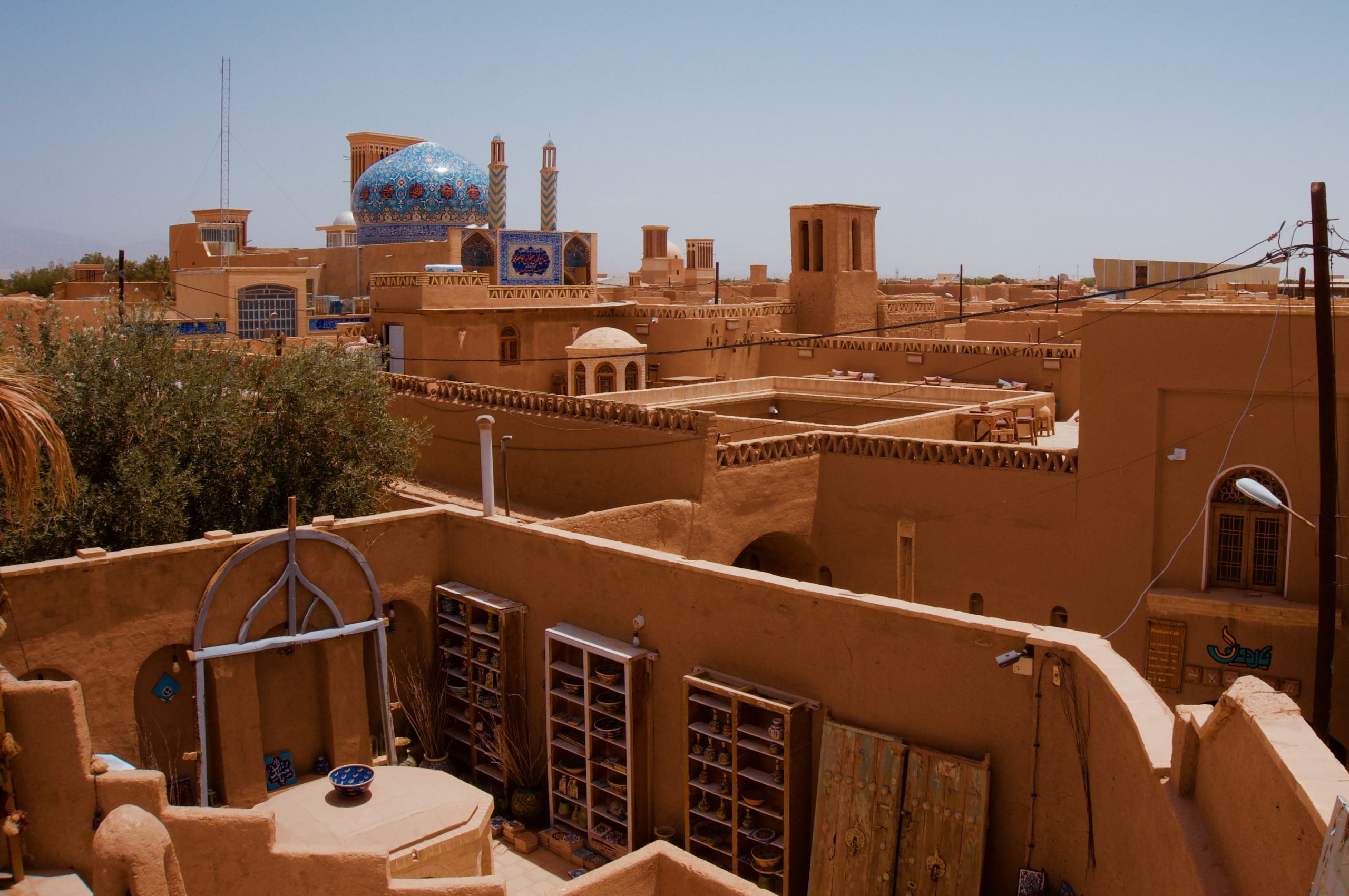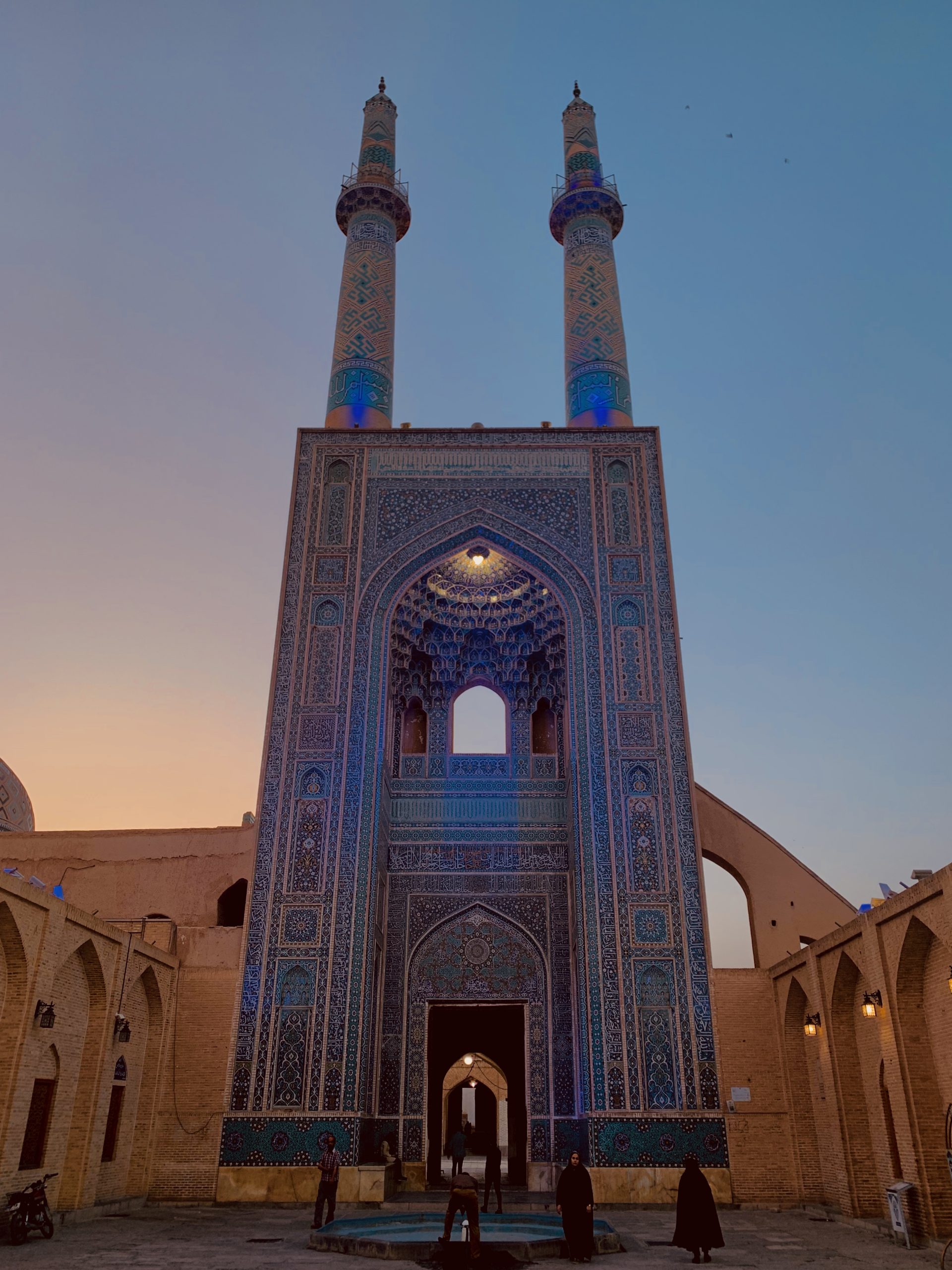Inside Iran: Holy City of Yazd
Nan Pang
After spending a night in the Varzaneh Desert in Iran with Hamidreza and his father, I was ready to head east. Because Varzaneh is a small desert town and does not have a bus stop, I decided to hitchhike from the nearest highway. It must have been a peculiar sight for the Iranians as they saw me with my 40L backpack standing at the highway to stop a car, as there is no hitchhiking culture in Iran. Luckily, a father and son picked me up and dropped me off at the nearest city called Na’in. There, two nice police officers at the highway checkpoint tried to stop a bus for me so that I could hop on to Yazd. They were curious about my background and the sneakers I was wearing. We chatted about sneaker brands and their police car while waiting for the bus—cars and sneakers are surely the lingua franca across the globe.
I arrived at Yazd in the afternoon. This place probably has the essences of the middle eastern cities you imagine—it has well-preserved mud bricks, a bright blue mosque, and iconic wind-catchers. I barely saw anyone on the street on my way to the Amir Chakhmaq Complex, most likely due to the extreme heat and the fact that the tea houses seemed to be closed due to Ramadan as well. Though Yazd is not considered to be a religious city like Mashhad or Qom, it is definitely conservative and traditional. I noticed more women wearing traditional chadors as I walked down the street, adding a unique atmosphere to the city. After all, the word Yazd does mean “holy.” At twilight, the city came back to life once again. Rooftop cafes were popular spots among locals and tourists. People gathered around to share stories while sipping on drinks. Sekanjabin is a good summer drink to try if you don’t know what to get. It is one of the oldest Iranian drinks, made of honey, vinegar, and cucumber.
